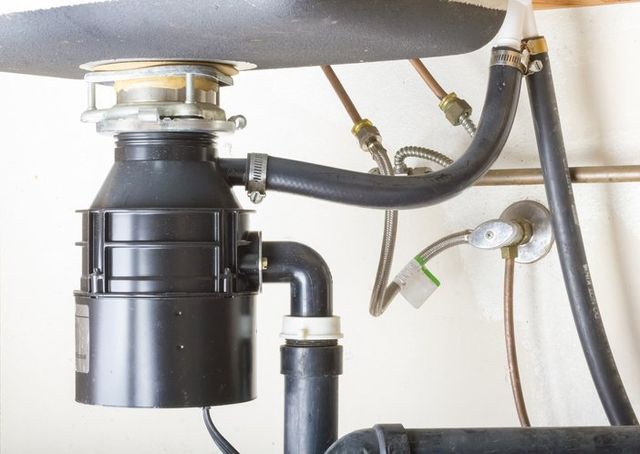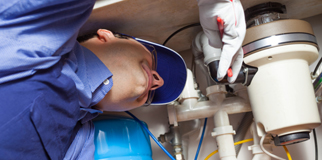Fast Fixes for a Dripping Garbage Disposal
Fast Fixes for a Dripping Garbage Disposal
Blog Article
Listed here in the next paragraph you will find a lot of amazing ideas concerning Why Is My Garbage Disposal Leaking From the Bottom?.

Garbage disposals are vital kitchen area home appliances that aid in taking care of food waste efficiently. Nonetheless, a dripping garbage disposal can be a frustrating and messy problem to deal with. Thankfully, numerous leaks can be repaired easily with a few straightforward actions. In this short article, we will talk about how to fix a leaking garbage disposal successfully.
Introduction
Garbage disposals are installed under kitchen sinks and are made to shred food waste right into smaller items, enabling it to go through the pipes system conveniently. While these gadgets are generally reliable, leakages can occur in time because of deterioration, loose links, or damages to the system.
Common Causes of Leaks in Garbage Disposals
Worn Seals and Gaskets
Seals and gaskets play a crucial role in avoiding water from leaking out of the garbage disposal. Gradually, these elements can weaken, leading to leakages around the disposal system.
Loose Connections
The links in between the garbage disposal and the pipes system can come to be loose with time, triggering water to leakage out during procedure.
Fractures or Openings in the Disposal System
Physical damage to the waste disposal unit, such as cracks or holes in the real estate, can additionally result in leaks.
Identifying the Resource of the Leak
Prior to attempting to repair a dripping waste disposal unit, it is necessary to recognize the source of the leakage. This can usually be done via visual evaluation or by performing straightforward tests.
Visual Evaluation
Check the waste disposal unit unit thoroughly for any type of indications of water leak. Pay very close attention to locations around seals, gaskets, and link points.
Evaluating for Leakages
One means to check for leaks is by running water with the disposal system and checking for any noticeable indicators of leakage.
Devices and Products Needed for Fixing a Leaking Waste Disposal Unit
Prior to beginning the repair service procedure, gather the necessary devices and products, including a screwdriver, adjustable wrench, plumbing technician's putty, substitute seals or gaskets, and epoxy or patching product for fixing fractures or openings.
Step-by-Step Overview to Repairing a Dripping Garbage Disposal
Turn Off the Power
Prior to trying any repair services, guarantee that the power to the waste disposal unit unit is turned off to avoid the threat of electrical shock.
Find the Leak
Determine the specific area of the leakage and identify the cause.
Tighten up Connections
Utilize a wrench to tighten any kind of loose connections between the disposal unit and the pipes system.
Replace Seals or Gaskets
If the leak results from worn seals or gaskets, remove the old parts and replace them with brand-new ones.
Patching Fractures or Openings
For cracks or openings in the disposal device, use epoxy or an ideal patching material to seal the broken location.
Checking the Waste Disposal Unit After Repair Service
When the fixing is full, test the waste disposal unit by running water through it to guarantee that the leak has actually been solved.
Preventive Upkeep Tips to Prevent Future Leaks
To avoid future leaks, it is necessary to carry out routine maintenance on your garbage disposal. This consists of keeping it tidy, avoiding putting non-food products or tough things down the disposal, and regularly checking for leaks or other issues.
Verdict
To conclude, fixing a leaking garbage disposal is a fairly uncomplicated process that can be completed with standard devices and materials. By complying with the actions laid out in this post and exercising precautionary maintenance, you can keep your waste disposal unit in good working problem and stay clear of pricey fixings in the future.
HERE’S HOW TO FIX YOUR GARBAGE DISPOSAL
WHAT TO DO IF SOMETHING IS STUCK IN YOUR GARBAGE DISPOSAL
If the impeller won’t turn, there’s probably something stuck in the disposal. It could be a steak bone or peach pit, although plumbers report pulling all sorts of inappropriate objects out of disposals, such as bottle caps or aluminum foil. Make sure power to the disposal is off, and look inside to see if you can see the source of the jam.
Never stick your fingers in a disposal. Pull out anything you see with tongs or pliers.
If the disposal still won’t work, it may be time to call a plumber or consider buying a new disposal. GEM Plumbing & Heating is here for all of your garbage disposal needs.
WHAT TO DO IF YOUR GARBAGE DISPOSAL DRAIN IS CLOGGED
Take everything out from underneath your sink and put a bucket or other container under your disposal to catch any water that drains out. Disconnect your disposal from the power supply. If it’s plugged into a wall outlet, unplug it. If it’s hardwired into an electrical box, go to the electrical panel and turn off the breaker for the disposal. Pour ¼ cup of baking soda into the drain, followed by ½ cup of white vinegar. Give the solution a few minutes to fizz and do its work. Look into the disposal with a flashlight to see if you can see an object that might be causing the clog. If you see it, remove it using tongs or pliers. MORE TIPS ON DEALING WITH A CLOGGED GARBAGE DISPOSAL
Never use drain cleaner in a garbage disposal. It can damage the plastic parts inside the disposal. You can also be splashed with the caustic liquid while working to clear the clog. Beware! Never stick your fingers into a garbage disposal. Trust us — not a good idea. In many instances, your dishwasher drains through your garbage disposal. This allows the disposal to grind any large food particles that may be drained out of your dishwasher. There are some jurisdictions, however, where the plumbing code prohibits such a connection. WHAT TO DO WHEN YOUR DISHWASHER DRAINS THROUGH THE DISPOSAL
Run some water in the sink so your plunger has at least a ½-inch of water to create a seal and plunge vigorously up and down several times. You may need to repeat this several times. Run hot water down the drain to clear any residue that remains.

I hope you enjoyed reading our part on Why Is . Thank you for spending some time to read our piece. Are you aware of another person who is curious about the topic? Do not hesitate to share it. We value reading our article about Why Is .
Find Out More Report this page